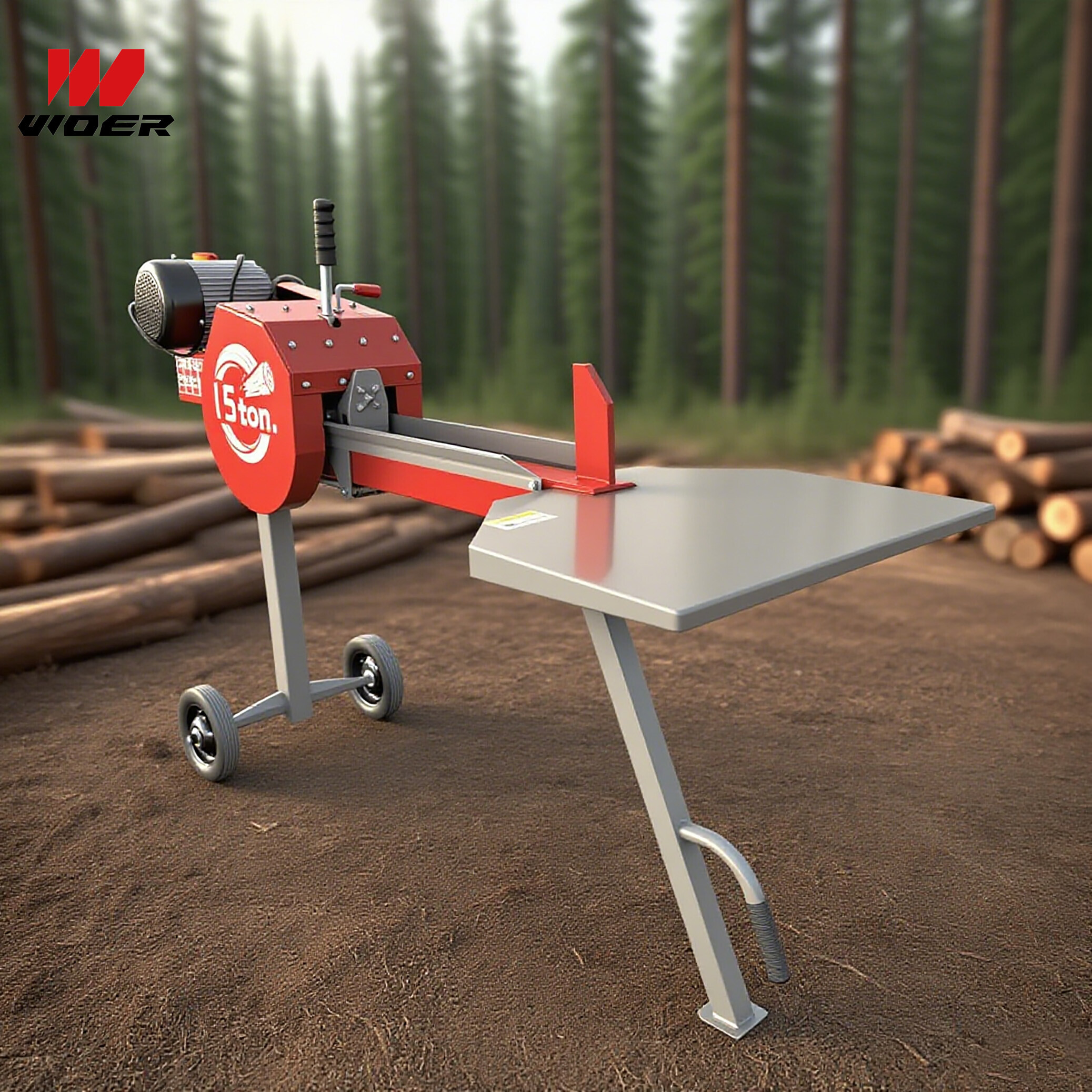Navigation
Contact us
Phone
Message

Overview: log splitter types and business context
Choosing the right log splitter influences operating margin, labor allocation and site safety. Common types include hydraulic log splitter, electric log splitter, kinetic log splitter and log splitter gasoline variants. Each type suits distinct workflows: high-throughput yard operations often prefer hydraulic or kinetic machines, whereas smaller workshops and rental fleets may favor electric or gasoline models. Understanding cost components—capital expenditure (CapEx), operating expenditure (OpEx), maintenance and downtime—is the first step toward a reliable ROI forecast.
Cost components that drive ROI
Initial purchase and installation
Initial cost ranges widely: small electric log splitter models can start near $600–$1,200, mid-range electric and compact hydraulic units $2,000–$6,000, industrial hydraulic splitters $8,000–$25,000, and kinetic log splitter machines often fall between $3,000–$12,000 depending on capacity. Installation costs include foundation or mounting, electrical work for electric models, and PTO or engine integration for gasoline and large hydraulic systems. Accurate CapEx estimates must include these auxiliary costs.
Energy and fuel costs
Energy consumption patterns differ. Electric splitters typically draw 2–7 kW depending on cycle; at typical industrial electricity rates, running costs are predictable and lower in many regions. Hydraulic log splitter machines driven by electric motors consume more power during peak load but may idle less. Log splitter gasoline units incur fuel cost volatility and higher per-hour operating expense, while kinetic log splitter designs often achieve faster cycle times with comparable or lower energy per split but sometimes higher initial cost.
Maintenance, parts and labor
Hydraulic systems require fluid changes, seal and cylinder maintenance, and periodic pump servicing. Electric splitters have fewer service items—motors, belts and electrical controls—often translating to lower recurring costs. Gasoline models need engine servicing (oil, filters, spark plugs) and more frequent inspections. Factor in mean time between failures (MTBF) and downtime costs—lost throughput can negate nominal savings in CapEx.
Side-by-side comparison (summary)
Sample ROI scenarios and quick math
Scenario A — Small workshop buys an electric log splitter for $1,200. Annual energy and maintenance cost: $300. Labor and throughput meet demand. If the alternative is manual splitting cost valued at $6,000/year in labor, switching yields net savings of $4,500 yearly and ROI in under four months when factoring reduced labor and improved consistency.
Scenario B — Mid-sized yard evaluates a hydraulic log splitter ($12,000 installed) vs a kinetic machine ($7,500). Hydraulic offers higher single-cycle force and works with oversized billets, increasing usable throughput by 25% for certain species. When revenue per cord and labor savings are modeled, the hydraulic unit reaches payback in 18–30 months for high-volume operations; the kinetic unit may return faster in medium-volume but high-speed workflows. Decision depends on log mix, piece size distribution and labor cost.
Factors that change the calculation
- Throughput requirements and cycle time—faster cycles increase revenue per shift.
- Log characteristics—knots, moisture content and diameter can favor hydraulic force over kinetic speed or vice versa.
- Energy costs—regions with low electricity rates favor electric solutions; high diesel costs penalize gasoline models.
- Regulatory and safety compliance—machines meeting CE, EN or local standards may cost more upfront but reduce liability and insurance costs.
- Resale value and depreciation—robust hydraulic frames and modular electric units often retain value better in secondary markets.
Procurement guidance and common pitfalls
When sourcing machines or looking for a log splitter for sale cheap, beware of compromised warranties, underspecified motors or pumps, and absence of certified safety guards. Evaluate vendor service networks and spare parts lead time. Ask for test splits with your typical wood species, request MTBF data and documented maintenance intervals. Include a total cost of ownership (TCO) clause in purchase evaluations rather than focusing on headline invoice price alone.
Standards, safety and reliability
Prioritize machines that conform to applicable standards such as EN ISO machine directives, CE marking for European markets, or nationally recognized standards like ASTM for related equipment safety. Safe operation reduces indirect costs—fewer incidents mean lower downtime, reduced insurance claims and improved workforce morale. For vertical log splitter applications or specialized attachments, verify structural ratings and manufacturer test results.
Use cases and supply chain considerations
Commercial firewood producers, municipal crews and rental houses each have distinct priorities. Rental operations often choose durable hydraulic or electric models with modular parts; remote forestry contractors value gasoline-powered independence. Evaluate lead times—custom or heavy industrial units may have 6–12 week manufacturing cycles, so align procurement with peak seasons to avoid revenue loss.
Common misconceptions
Many buyers assume the cheapest unit delivers fastest ROI. In practice, hidden costs—frequent downtime, replacement parts, subpar throughput—erode the perceived savings. Another misconception: electric splitters lack power. Modern electric motor designs deliver consistent torque suitable for many commercial tasks while reducing noise and onsite emissions.
Actionable checklist for faster ROI
- Map your daily throughput and log mix.
- Estimate labor cost savings from mechanization.
- Compare CapEx + 3-year OpEx for shortlisted machines.
- Validate vendor service coverage and spare part availability.
- Run a pilot split test under production conditions.
Final recommendation
For organizations prioritizing low operating cost, predictable service and minimal noise, electric log splitter solutions often deliver the fastest practical ROI. For high-volume yards requiring maximum force and versatility, a hydraulic log splitter generally justifies its higher price through increased throughput and resilience. Kinetic machines are competitive where cycle speed is the dominant value driver. Gasoline models remain relevant for off-grid work. Use the checklist above, validate against standards and vendor support, and model TCO over 3–5 years to make a defensible procurement decision.

This stunning beach house property is a true oasis, nestled in a serene coastal community with direct access to the beach.
Contact
West Street, Melbourne Victoria 3000 Australia